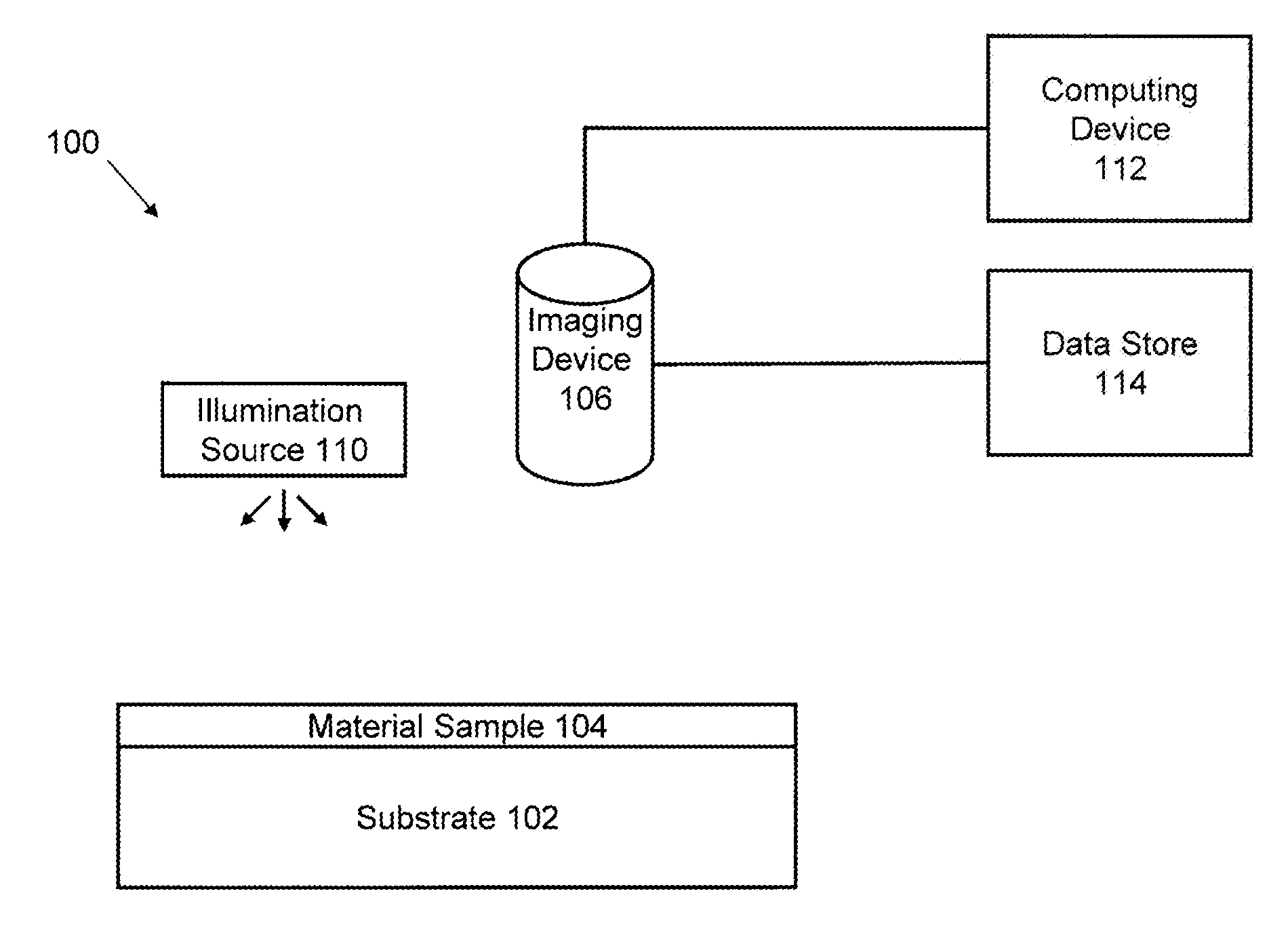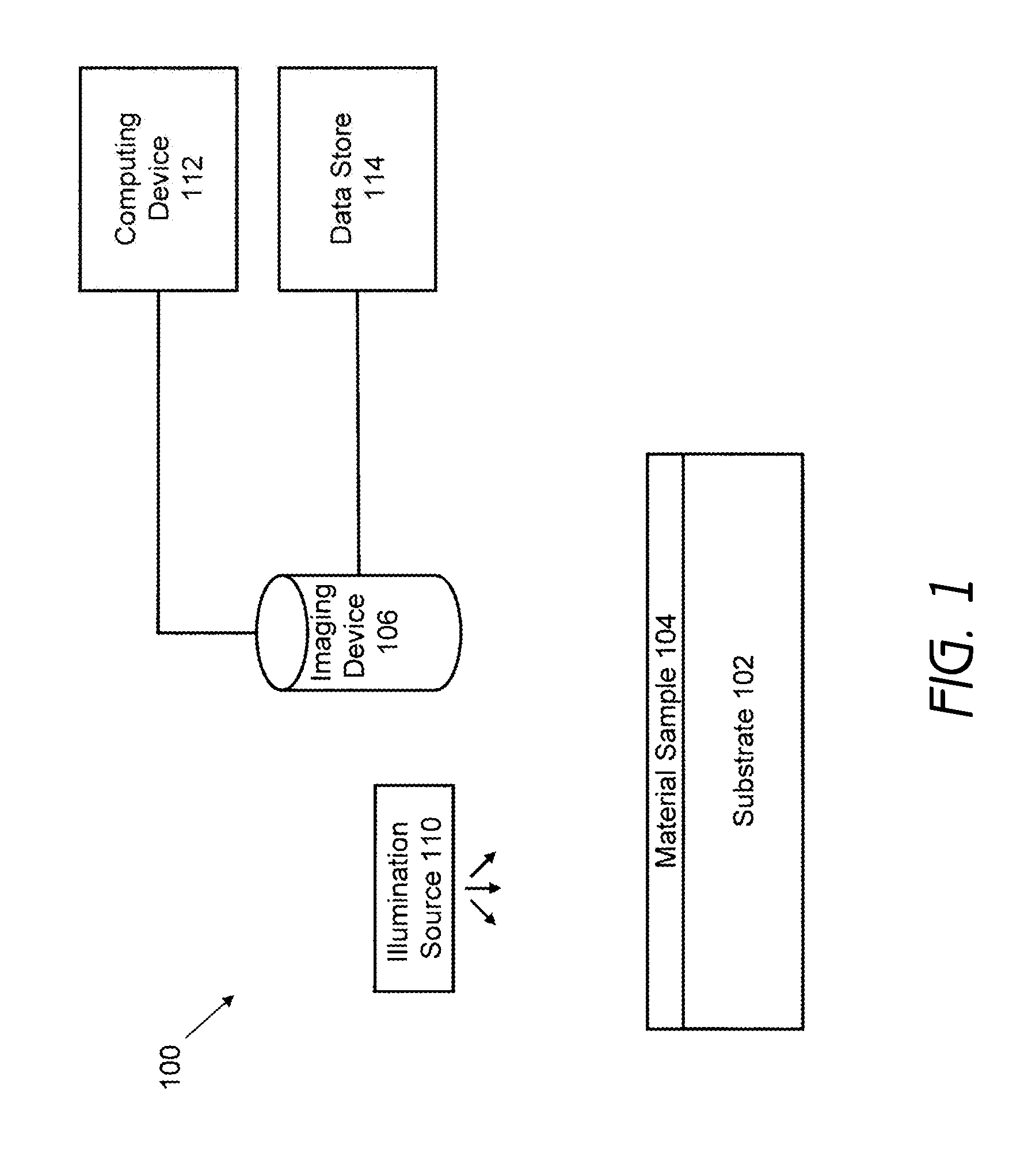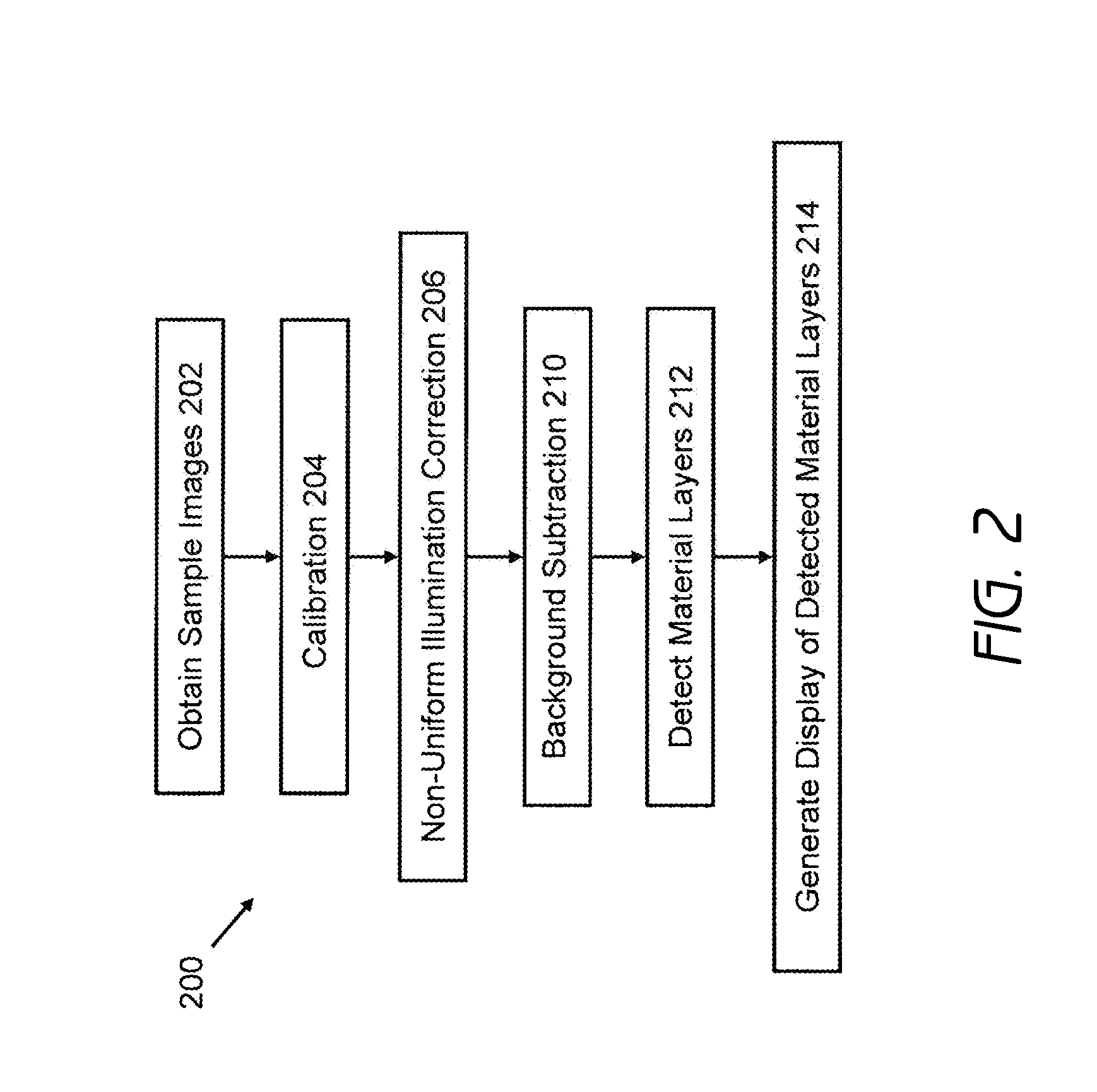Systems and methods for material layer identification through image processing
a technology of image processing and material layer, applied in image enhancement, image data processing, instruments, etc., can solve the problems of inability to locate and identify single and few-layer graphene regions in graphene samples, inability to analyze large-area graphene wafers, and limited existing methods
- Summary
- Abstract
- Description
- Claims
- Application Information
AI Technical Summary
Benefits of technology
Problems solved by technology
Method used
Image
Examples
Embodiment Construction
[0024]Embodiments of the present disclosure relate to systems and methods for the detection of a number of layers present in selected thin film materials. In certain embodiments, the materials may comprise layers that are coupled by Van der Waals forces. In further embodiments, the materials may comprise graphene, topological insulators (e.g., Bi2Te3, BiSe3), thermoelectrics (e.g., Bi2Te3), mica, materials having a Van der Waals gap and that may be exfoliated, and materials having a Van der Waals gap and that may be grown (e.g., grown by techniques including, but not limited to, chemical vapor deposition (CVD), molecular beam epitaxy (MBE), atomic layer deposition (ALP), and the like. Embodiments of the systems and methods may be discussed below in the context of graphene, however, the embodiments of the disclosure may be applied to any layered materials
[0025]The terms “approximately,”“about,” and “substantially” as used herein represent an amount close to the stated amount that sti...
PUM
 Login to View More
Login to View More Abstract
Description
Claims
Application Information
 Login to View More
Login to View More - R&D
- Intellectual Property
- Life Sciences
- Materials
- Tech Scout
- Unparalleled Data Quality
- Higher Quality Content
- 60% Fewer Hallucinations
Browse by: Latest US Patents, China's latest patents, Technical Efficacy Thesaurus, Application Domain, Technology Topic, Popular Technical Reports.
© 2025 PatSnap. All rights reserved.Legal|Privacy policy|Modern Slavery Act Transparency Statement|Sitemap|About US| Contact US: help@patsnap.com



